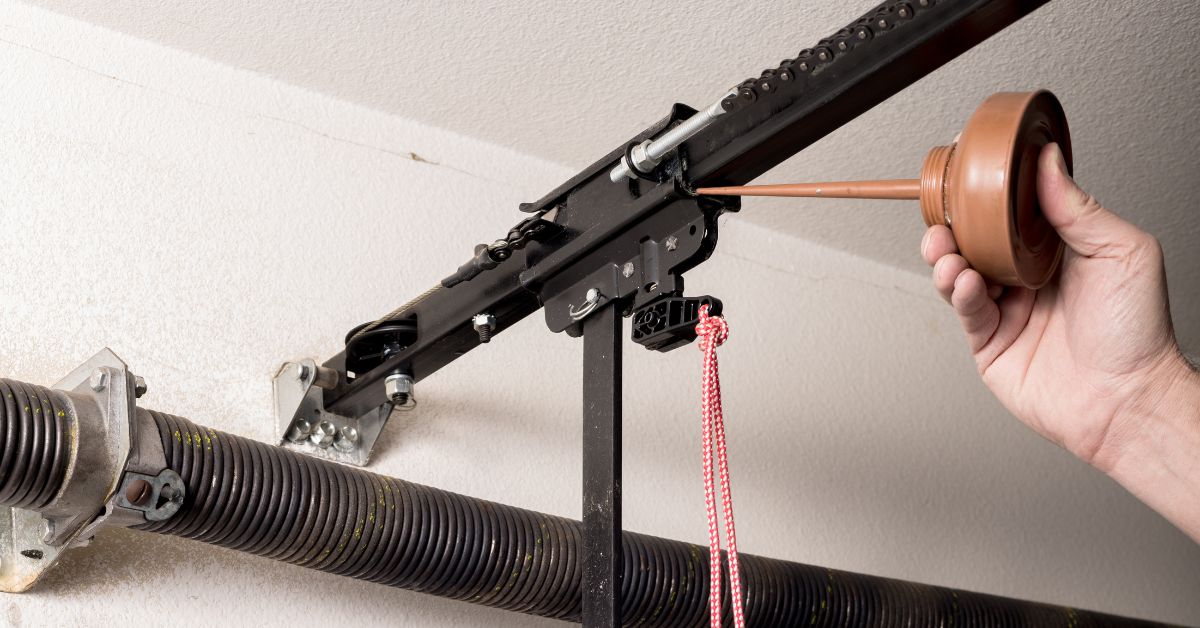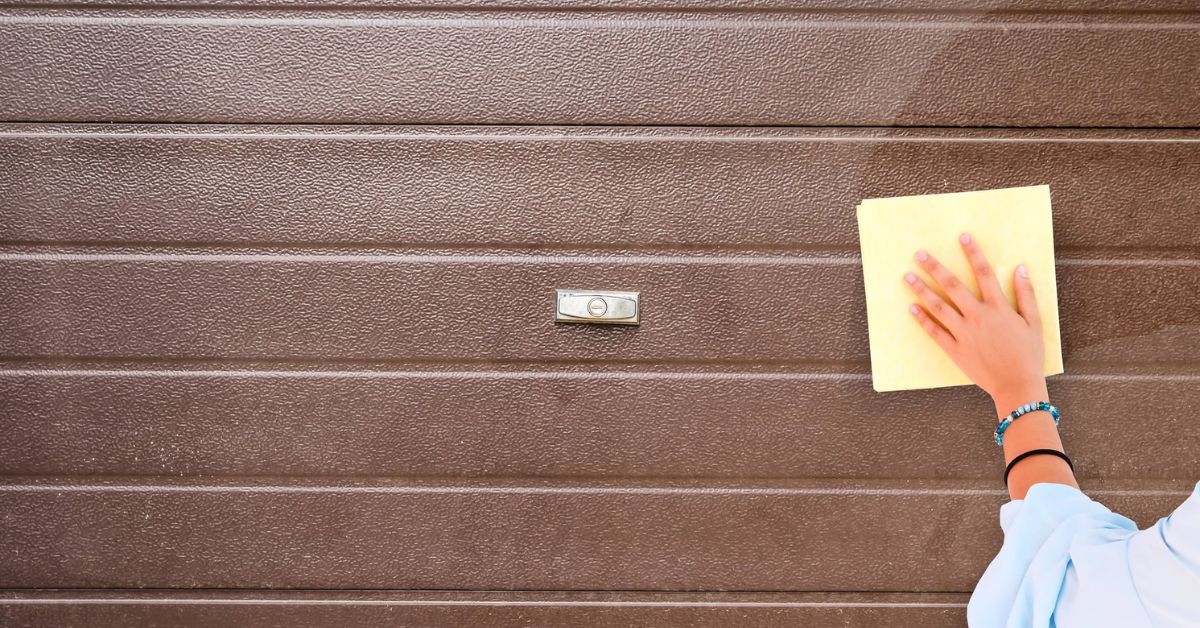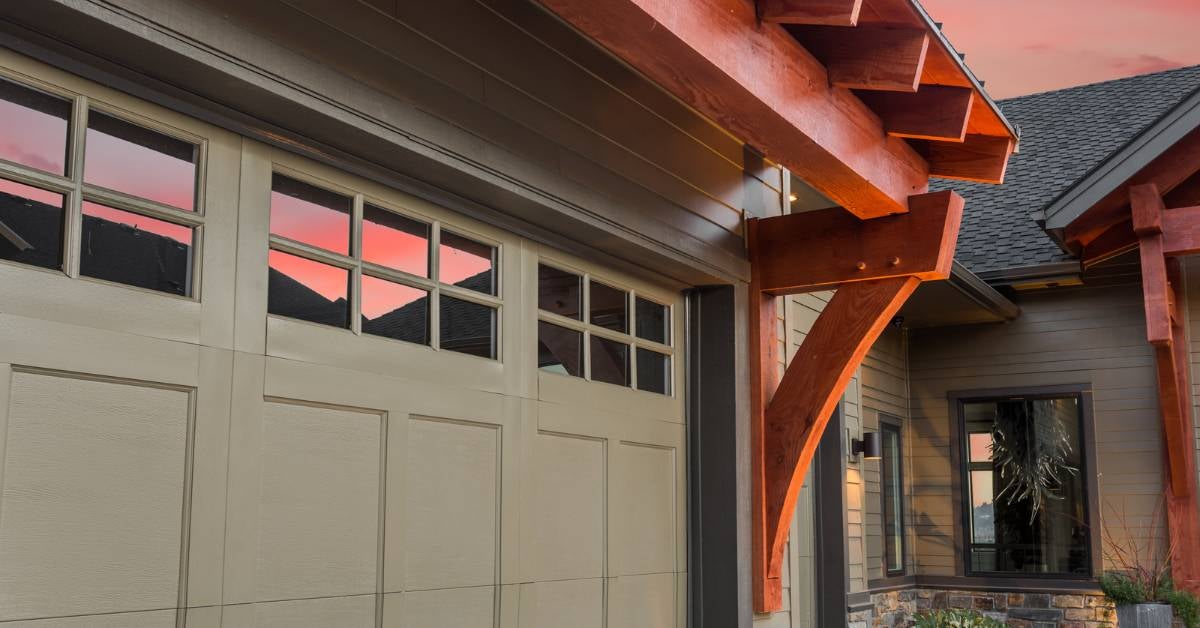-
Lubrication 101: The Importance of Keeping Your Garage Door Moving Smoothly

Is your garage door producing excessive noise during operation? Those sounds aren’t just giving your neighbors something to complain about–they’re your door’s desperate cry for help.
When was the last time you gave all those moving parts some TLC? Most homeowners completely forget this simple maintenance task until things get noisy or sticky.
Proper garage door lubrication doesn’t just quiet things down. It’s absolutely essential for smooth operation and adds years to your door’s working life. This quick guide from your friends at Thomas V. Giel Garage Doors breaks down everything you need to know to keep things running smoothly and silently.
Why Lubrication is Non-Negotiable for Smooth Movement
The massive panel on your garage doors goes up and down several times daily, which is a lot of movement. Without good lubrication, all those metal parts (think hinge pins and roller bearings) rub directly against each other. Metal-on-metal contact creates serious friction. That friction could be the cause of the unpleasant noise you hear when you hit the opener button.
Preventing Wear and Problems
But noise is just the first warning sign. The real trouble starts when that friction makes your door move in jerky, stop-start motions. Components wear down way faster than they should. Your opener motor strains harder than necessary, shortening its life.
Before you know it, one worn part puts stress on another, and another, creating a domino effect of garage door problems.
A Protective Barrier
Good lubrication creates a protective barrier between moving parts. It lets everything glide together smoothly, the way the manufacturer intended. Keeping those parts slippery dramatically reduces strain across the entire system and is vital garage door maintenance.
Wouldn’t you rather spend five minutes with a spray can twice a year than deal with a completely broken door at the worst possible moment?Choosing the Right Lubricant (and Avoiding the Wrong One!)
First, let’s talk about what NOT to use. Toss that can of regular WD-40 back in the drawer. Most folks reach for it automatically, but here’s the truth: standard WD-40 isn’t actually a true lubricant for this job.
It’s more of a cleaner and water displacer (that’s what the “WD” stands for!). Sure, it might quiet things down for a few days, but it’ll actually wash away the good grease your door needs. Even worse, it turns into a dust magnet over time, creating a gritty mess that makes your original problem worse.
Your Best Lubricant Choices
So what should you use instead? You’ve got two solid options:
- White Lithium Grease: Ideal for metal-on-metal contact points (hinges, opener chain/screw) because it clings well, offering durable protection.
- Silicone Spray (Garage-Door Specific): Excellent for roller bearings and locks, as it penetrates tight spaces and attracts less dust – a real advantage in most garage environments.
The How-To: Lubricating Key Components Effectively
Got your lubricant ready? Great! Now let’s get down to the actual job. But before you start spraying everything in sight, there are a few tricks to doing this right.
Remember, safety first. Unplug your garage door opener or disconnect it using the emergency release cord. The last thing you want is the door suddenly deciding to move while your fingers are near the hinges.
Next, grab some rags and wipe down all the parts you plan to lubricate. Why bother with this step? Because adding fresh lube on top of old dirt just creates a gunky, abrasive paste that actually makes things worse. A few minutes with a rag now saves headaches later.
Targeting the Right Spots
Apply your chosen lubricant sparingly to key areas:
- Hinge pivot points and steel roller bearings (use the spray straw for precision)
- Torsion springs (a light mist helps quiet them and resist corrosion)
- Your opener’s chain or screw drive (check your manual first)
- The moving parts of the lock assembly.
- Immediately wipe away any excess lubricant to prevent drips and keep it from attracting dirt.
What to Avoid Lubricating
Crucially, never lubricate the garage door tracks. This attracts performance-hindering grit. Also, avoid lubing nylon rollers or belt drive opener belts; simply keep tracks clean and dry.
Once done, operate the door manually a few times to distribute the lubricant. Listen closely–you should notice a pleasing difference in the sound almost immediately.
Conclusion
So there you have it, lubricating your garage door isn’t too difficult, and it’s a maintenance task that pays off big time. Have you ever thought about how much a full garage door replacement costs these days? Regular lubrication helps you avoid that expense for years longer than you’d expect.
If you’re not feeling handy with this stuff, the pros at Thomas V. Giel Garage Doors are just a phone call away. We’re happy to handle this maintenance as part of a complete door tune-up that keeps everything running like clockwork.
- White Lithium Grease: Ideal for metal-on-metal contact points (hinges, opener chain/screw) because it clings well, offering durable protection.
-
Spring Garage Door Cleaning: How to Get Rid of Dirt

Spring’s arrival means it’s time to wash that layer of winter grime off your garage door. Beyond just boosting your home’s curb appeal (which research shows significantly impacts home value), proper garage door cleaning is vital–it removes corrosive road salt residue left behind, preventing potential damage. Here at Thomas V. Giel Garage Doors, we want to walk you through how to safely and effectively get your door sparkling.
Why Spring Cleaning Your Garage Door is Crucial (Beyond Just Looks)
Think winter film on your garage door is just harmless dirt? Think again. The residue left by road treatments often contains chloride ions that actively promote rust and eat away at your door’s paint finish, particularly on steel doors.
Along with gritty particulate matter, this isn’t just unsightly–it’s a slow chemical attack.Prevent Problems, Save Money
Consider this cleaning session your first step in essential garage door upkeep. Catching minor finish issues or wear now saves you from much larger headaches and expenses later. Always remember that putting off maintenance usually means paying more down the road.
It’s also the perfect moment for a quick visual inspection.
The Right Tools & Prep for a Safe Clean
Before you start, gathering the right gear makes all the difference. You’ll want a proper pH-neutral car wash soap. Unlike harsh dish soaps, it cleans effectively without stripping any existing wax or sealant.
Pair this with a soft microfiber wash mitt; its tiny fibers trap dirt safely, reducing the chance of causing fine scratches. Grab two buckets, one soap and one rinse (a Grit Guard in the rinse bucket helps), and your standard garden hose.Skip the Pressure Washer
Now, one critical point: resist the temptation to use a pressure washer. The intense blast can easily damage paint, force water past seals, and even dent garage door panels. Gentle handwashing is truly the best approach here.
Step-by-Step – Washing Away Winter Grime
1. Start with a Good Rinse
First, give the entire door a gentle but thorough pre-rinse with your garden hose, working from top to bottom. This washes away the loosest, most abrasive bits of grit before you even touch the surface with your mitt.
2. Wash Smart with Two Buckets
Now, dip your microfiber mitt into the soapy water bucket and gently wash a section of the door, again starting from the top and working down. Before getting more soap, rinse the dirty mitt thoroughly in your plain water bucket.
This Two-Bucket Method is the secret to keeping grit off your mitt and preventing fine scratches.
3. Tackle the Toughest Spots
Pay extra attention to the lower garage door panels where road salt and heavy grime tend to accumulate most. If needed, you can use a soft brush very gently on stubborn spots or around panel seams, but be careful not to scrub hard.
4. Rinse Like You Mean It
This step is crucial for preventing residue damage. Rinse the entire door meticulously from top to bottom until no soap bubbles or film remain. Lingering soap or salt residue can still cause harm. Ensure you flush water well along the bottom weatherstripping and edges.
5. Dry for a Spotless Finish
While optional, drying the door with clean, soft microfiber towels is highly recommended. It prevents hard water spots from forming as the door air-dries and gives you a final chance to inspect the finish up close as you wipe.
Keeping Your Garage Door Clean With Expert Help
There you have it, a sparkling clean garage door! This simple act of garage door upkeep improves curb appeal while protecting your investment. Considering a garage door replacement often yields over 100% return on investment at resale, taking care of your current one makes perfect sense.
If your cleaning revealed any damage, rust, or issues with how the door operates, don’t hesitate to contact Thomas V. Giel Garage Doors for a professional inspection and expert service. -
The Art of Matching Your Garage Door to Your Home’s Exterior Palette

Why do some homes look so “put together” while others seem slightly off? Your garage door takes up a huge chunk of your home’s front view – sometimes up to 30% of what people see!
Pick the wrong color, and it sticks out like a sore thumb. Choose the right one, and suddenly your whole house looks better. Done right, it can even bump up your property value.
Not sure where to start? Don’t worry. This guide, brought to you by Thomas V. Giel Garage Doors, walks you through matching your garage door to the colors already working on your house.
Know Your Home’s Palette First
Before you start browsing color swatches for your garage door, take a good, hard look at what you’ve already got. Your house has a built-in color scheme, whether you planned it or not. Walk across the street and really see what others see.
Identify the Main Players
What color is your siding or brick? That’s your main player. Now, check out your trim around windows and doors. Don’t forget about your roof – most folks overlook it, but that huge expanse of shingles or metal makes a color statement. These fixed elements create the palette you’ll need to work with.
Look for Hidden Color Clues (Undertones)
Here’s where it gets a bit tricky. Colors aren’t just what they seem at first glance. The beige siding might lean yellowish (warm) or grayish (cool).
See those gray roof shingles? Look closer–do they have blue hints or brown ones? These hidden color leanings are what pros call “undertones,” and they make all the difference.Why Undertones Matter
Ever wonder why some color combinations just feel “off” even though you can’t explain why? It’s usually clashing undertones. When your garage door color clashes with these subtle undertones, the whole house looks awkward. Match them right, and suddenly everything clicks into place.
Choosing Your Garage Door Color Strategy
Now that you’ve got a handle on your home’s built-in colors, it’s time to pick a game plan. There’s no one-size-fits-all answer here–the right approach depends on what you want to accomplish with your garage door.
Strategy 1: Blend It In
Want your garage to blend in instead of stealing the show? Try matching your door color closely to your main house color. This works like magic for homes where the garage takes up too much of the front view. The door simply disappears into the background, letting other features shine.
Strategy 2: Match the Trim
Not sure what’s completely safe? Go with your trim color. This tried-and-true approach is like the little black dress of garage door colors; it rarely fails. Using the same color as your window frames and fascia creates a nice, clean outline around the door and ties everything together visually.
Strategy 3: Play it Safe with Neutrals
Neutral colors give you room to breathe. Whites, grays, beiges, blacks, and wood tones work with almost any house style. But here’s the catch–not all neutrals play well together. Remember those pesky undertones we talked about? They matter here, too. That gorgeous gray that looked perfect in the showroom might clash with your house if it’s too blue-toned and your siding leans warm.
Pulling It All Together
The right garage door color ties your whole house together. It’s one of those details that most folks don’t consciously notice, but they definitely feel the difference when it’s done right.
A thoughtfully chosen door boosts curb appeal and can even bump up your home’s value when it comes time to sell.
If you’re unsure of which direction to go, the experts at Thomas V. Giel Garage Doors can show you options that work specifically with your home’s style and colors. Sometimes a professional eye spots possibilities you might miss on your own.
